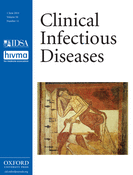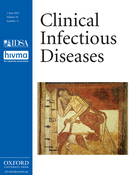
Cover image

On the cover: The Poor Lazarus at the Gate of the Rich Man's House, fresco, 12thc., Anonymous, from San Clemente de Tahull. Art Museum of Cataluña, Barcelona, Spain. Art Resource, NY. Reproduced with permission.
A New Testament story tells of the rejection of a poor beggar, Lazarus, from the table of a rich man, Dives. Lazarus, as above, was often depicted with leprous sores and a crutch, to indicate that he was like those seen in the Middle Ages, who while suffering from leprosy, were forced to beg for a living, due to the restrictions on their daily existence.
The story was a morality tale, which ended well for Lazarus, for he went to heaven; Dives, however, suffered for his miserly behavior in the depths of Hell. This Lazarus was the eponymous sufferer after whom institutions such as Lazar House or Lazaretto were named. Such institutions were served by charitable clergy and laymen, who cared for those stricken with this disease.
Here, in this Romanesque fresco, the sufferer is depicted in a despondent posture, with leproma all over his body, while a dog licks his sores. Leprosy sores were commonly stylized as spots in paintings at the time.
(Mary & Michael Grizzard, Cover Art Editors)
Volume 58, Issue 11, 1 June 2014
Editorial Board
Cover
Subscriptions Page
Table of Contents
HIV Viremia and Incidence of Non-Hodgkin Lymphoma in Patients Successfully Treated With Antiretroviral Therapy
Non-Hodgkin lymphoma incidence is high in HIV-infected patients successfully treated with antiretroviral therapy. HIV replication, even at low levels, may be an important modifiable risk factor for non-Hodgkin lymphoma.
Campylobacter fetus Infections in Humans: Exposure and Disease
Campylobacter fetus is an opportunistic pathogen causing intestinal disease but also systemic infections. Major reservoirs are cattle and sheep. Food products may be a source of infection. Campylobacter fetus infection should always be considered in immunocompromised and occupationally exposed individuals.



